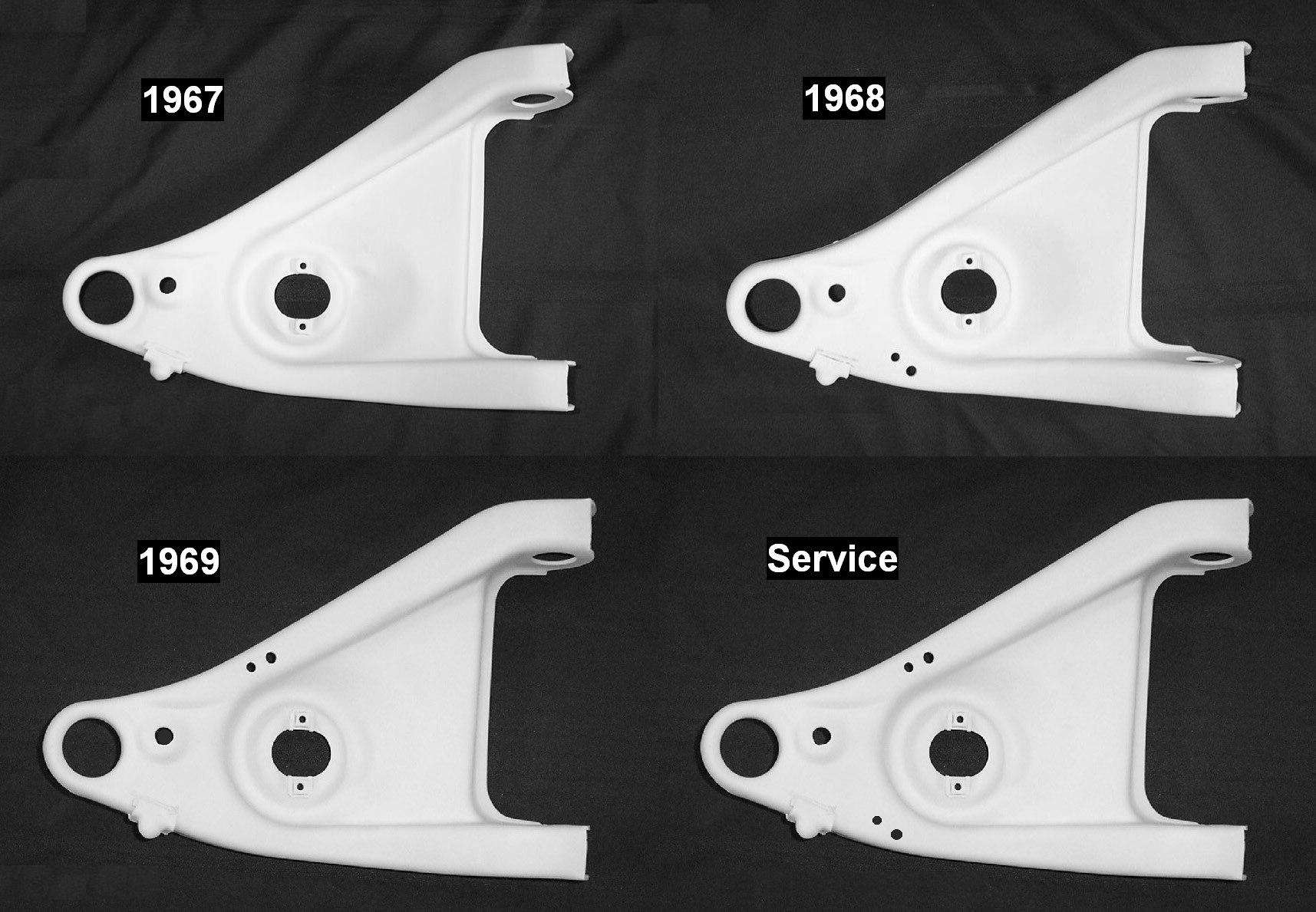 Lower A-Arms
Lower A-ArmsThe lower a-arms used for the 1st-gen Firebirds had small but noticeable differences for all three years. This was primarily due to changes in the location of the rubber bump stop which was used to cushion any contact with the frame upon full compression of the suspension. It is unknown why the location of the rubber bump stop changed each year.
In 67, the rubber bump stop was mounted on a bracket which was welded to the frame, thus there is no rubber piece mounted on the lower a-arm and no holes drilled in the a-arm to do so. For 68, a newly designed larger rubber bump stop was mounted (through two drilled holes) on the trailing side of the a-arm. The mounting bracket for the rubber bump stop (which had been in-line with the centerline of the wheel in 67) was removed and a newly designed metal contact pad for the rubber bump stop was mounted on the trailing side of the coil spring pocket on the frame. For 69, the same rubber bump stop was moved to the leading edge of the lower a-arm and the corresponding metal contact pad on the frame followed suit to the leading side of the coil spring pocket. All service replacement a-arms included mounting holes for both the 68 and 69 positioning of the rubber bump stop. Obviously, these holes are not relevant for the 67 application since the rubber piece is on the frame.
The 67 and 68 lower a-arms use welded-in nuts for the lower shock mount. For 69 and for all service replacement a-arms, the shock mounting nuts were attached by a J-clip, which simplified the nut installation and also allowed for easy replacement.
The Assembly Instruction Manuals for all three years show different part numbers for the lower a-arm assembly for drum brakes and the lower a-arm assembly for disc brakes. Despite analysis of the parts, the difference is unknown; it may involve another component of the a-arm assembly.